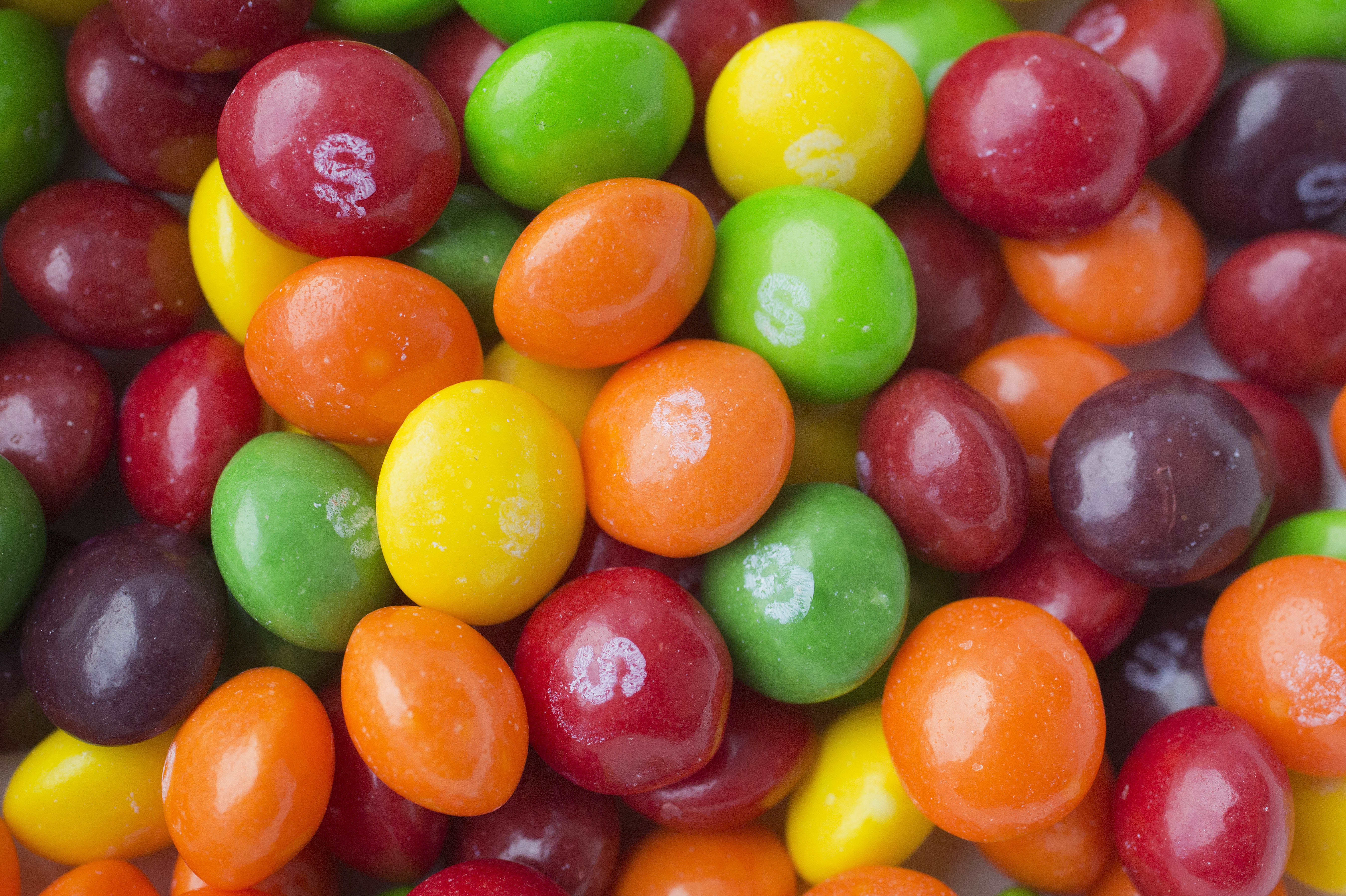
A lawsuit against Mars, the company that makes Skittles, points to titanium dioxide in the candy. The ingredient is one of thousands of additives allowed in foods under federal regulations.
Mark Lennihan / AP
A California man, who claims Skittles candy contains a “known toxin” that makes it “unfit for human consumption,” is suing the manufacturer, Mars.
That ingredient — titanium dioxide — is just one of the thousands of legal food additives in the U.S. In his lawsuit, Jenile Thames says Mars failed to warn consumers about the potential dangers of the ingredient, which is used as a color additive in Skittles.
According to the Center for Food Safety, Mars said in 2016 that it would phase out the use of titanium dioxide in its products over the next five years.
"While we do not comment on pending litigation, our use of titanium dioxide complies with FDA regulations," a spokesperson for Mars said in a statement to NPR earlier this week.
What is titanium dioxide?
Titanium dioxide is a white, powdery mineral used in a variety of everyday products, including sunscreen, cosmetics, plastics, toothpaste and paint. In food, titanium dioxide can appear in anything from candy and sauces to pastries, chocolates, chewing gum and other sweets as a color additive.
Titanium dioxide has been used for decades to whiten certain foods, though it has many other features.
What makes titanium dioxide harmful?
A European Food Safety Authority report in 2021 declared that titanium dioxide "could no longer be considered safe" as a food additive.
The agency could not rule out “genotoxicity” — damage to DNA — from consumption of titanium dioxide particles and that they could accumulate in the body, although the absorption was low.
The European Commission decided in February to ban the use of titanium dioxide as a food additive. The ban will take full effect in August.
The additive builds up inside the body and "whenever you have accumulation to something that's in so many foods, you can get to really harmful levels that raise concerns," says Tom Neltner, a chemical engineer and lawyer who serves as senior director of the safer chemicals initiative at the Environmental Defense Fund.
That type of buildup could alter DNA, which creates potential concerns about cancer and other health issues, he said.
"That doesn't mean [titanium dioxide] is carcinogenic, it just means we've got to be careful, and the fact that it gets into the body and is retained in the body is important," Neltner said.
Neltner said the Environmental Defense Fund and other NGOs are working to prepare a color additive petition — a legal way of asking the Food and Drug Administration to review titanium dioxide for safety.
Why is titanium dioxide allowed in the U.S.?
A spokesperson for the FDA told NPR that while the agency cannot comment on pending litigation, the agency continues to allow for the safe use of titanium dioxide as a color additive in foods under certain conditions, including a quantity that does not exceed 1% of the food's weight.
The FDA regulates food and color additives under the Federal Food, Drug, and Cosmetic Act, enacted in 1938.
The 1958 Food Additives Amendment to that set of laws meant that all food and color additives must get pre-market review and approval from the FDA.
Over 10,000 chemicals are allowed to be in foods and food contact materials, according to a 2018 policy statement from the American Academy of Pediatrics.
The FDA spokesperson told NPR that "the available safety studies do not demonstrate safety concerns connected to the use of titanium dioxide as a color additive."
"Federal regulations require evidence that each substance is safe at its intended level of use before it may be added to foods," the spokesperson said, adding that FDA scientists continue to review new information to determine whether the substance is no longer safe under the act.
But, I love Skittles. Should I stop eating them?
There are many foods on the U.S. market that contain titanium dioxide apart from Skittles.
However, the makers of many candies and foods are careful to avoid using titanium dioxide in their foods as a color additive.
"There are plenty of candies that don't have titanium dioxide, so people have choices, and they can read the list," Neltner said.
Environmental and dietary health researchers face difficulties in tracing back health impacts to one specific exposure, especially when involving color additives like titanium dioxide.
"When I started out, we thought that a lot of these chemicals came from products ... and over time, we've really realized that we're exposed to a lot of these chemicals through diet, and that's exactly what we're seeing here," said Dr. Sheela Sathyanarayana, a pediatrician, environmental health specialist and a professor at the University of Washington and Seattle Children's Research Institute.
Sathyanarayana has focused much of her career on chemical exposures and how they affect child development.
"But what we don't know and what is really frustrating is: What are the long-term health impacts of these small exposures over time," she added.
Neltner also expressed concerns over the impact of color additives like titanium dioxide on children's health.
"We're most worried about children's health because that's when their immune system, the nervous system, their body — is growing so rapidly, that you have to get it right," he said.
Copyright 2022 NPR. To see more, visit https://www.npr.org.